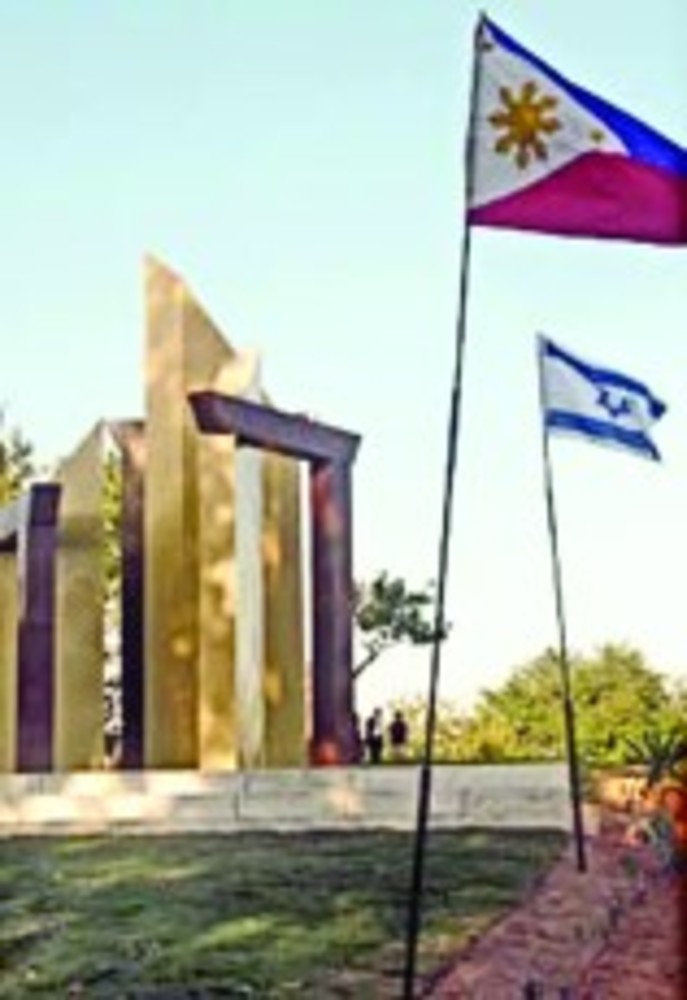Manila as a safe haven for European Jews
President Quezon’s rescue effort
 If anyone ever faults you for playing poker, tell them this story. It happened in the 1930s in the Philippines. The Frieder brothers – Alex, Philip, Herbert and Morris – wanted to cut costs by relocating their cigar business from Manhattan to Manila in 1918. In 1937, when German Jews were forced to evacuate from Shanghai to Manila due to conflict between Japanese and Chinese troops, Philip Frieder headed The Jewish Refugee Committee, which was organized to aid their settlement.
If anyone ever faults you for playing poker, tell them this story. It happened in the 1930s in the Philippines. The Frieder brothers – Alex, Philip, Herbert and Morris – wanted to cut costs by relocating their cigar business from Manhattan to Manila in 1918. In 1937, when German Jews were forced to evacuate from Shanghai to Manila due to conflict between Japanese and Chinese troops, Philip Frieder headed The Jewish Refugee Committee, which was organized to aid their settlement.
One night, the brothers decided to recruit their fellow poker players to create a haven for persecuted Jews. The fact that their circle included Paul V. McNutt, the American High Commissioner for the Philippines, Colonel Dwight D. Eisenhower, the aide to General Douglas MacArthur, Philippines’ Field Marshall, and Manuel L. Quezon, the president of the Philippine Commonwealth, facilitated the effort. McNutt persuaded the United States State Department to grant Jews visas for entry to Manila; Eisenhower planned Jewish settlement in Mindanao; and President Quezon separated truth from propaganda for cabinet members. With their efforts, more than 1,300 Jews settled in the Philippines. One of them was Frank Ephraim, whose book “Escape to Manila: From Nazi Tyranny to Japanese Terror,” sheds light on the ordeal.
Unfortunately, even Manila eventually proved unsafe. In December 1941, the Japanese entered the city, which housed roughly 2,500 Jews. Terror abounded and many Jews were placed in internment camps. People lost their homes and businesses. Those who chose to disobey faced torture and death. Temple Emil and Bachrach Hall, both named after Emil Bachrach – the first American Jew who settled in the country and became a philanthropist – were destroyed. During the three years that Japan occupied Manila, the city was so obliterated that it was the second most devastated capital city during World War II after Warsaw. In addition to the destruction, the Japanese forces are responsible for the deaths of about 70 Jews.
Interested in a personal account of the events, The Jewish Voice spoke with a witness, Jenny Spater, who saw Alan H. Gill’s article, “Jews and the Philippines inextricably linked,” (Jewish Voice Nov. 22) and called the paper. During that conversation, Spater kindly agreed to share her story.
Spater is a lucky person. While most of us have only one birth, she boasts two. Born in Manila in 1931, she underwent a rebirth that followed a near-death experience. During the Japanese occupation of the city, she hid in the place she calls “Little Switzerland,” a spot in the mountains, with her family. While she was there, she became ill with malaria and was treated by Dr. Handel, a Jewish doctor from Germany, whom she credits with saving her life. She said he himself was surprised that he was able to restore her health because she was in a terrible state.
Dr. Handel was not the only European Jew in Manila who won Spater’s respect. She speaks highly of the entire emigrant population, saying that many refugees prospered in their newly adopted country, opening large department stores, establishing factories and improving the operations of the city. The Filipino population was extremely welcoming to the new members of their community. Spater does not recall any instances of ostracism or anti-Semitism. She thinks that such kind treatment was in part due to President Quezon’s total acceptance of the Jewish people. Calling him “a very smart man,” Spater says that he inspired others to follow his lead.
A Sephardic Jew, Spater is a child of an Egyptian mother and a Turkish father. Her parents met in the Philippines after their families had arranged their marriage. When the war ended, they were left with few choices. Unlike the Filipinos, the family couldn’t buy a house since they were not citizens. Their rental home and all of their belongings were destroyed. As did many others, they decided to try their luck in Israel.
They emigrated in 1949 because they “wanted to experience life in the new country.” The family lived in Israel for two and a half years, deciding to leave after the death of Spater’s father. They returned to Manila, where they stayed for eight more years before immigrating to the U.S. Upon arrival, Spater was able to work for her old employer, a textile manufacturer, who had an office in New York. Just as President Quezon welcomed the Jewish people to Manila, the Big Apple, the most populous city in the U.S., welcomed Spater to our country. Not to be outdone by Lady Liberty, who stands tall to welcome all Americans – old and new – President Quezon now has his own monument. In June 2009, “Open Doors,” a monument designed by Filipino artist Junyee, was unveiled at the Holocaust Memorial Park in Rishon LeZion.
Editor’s note: see companion article on page 4.







